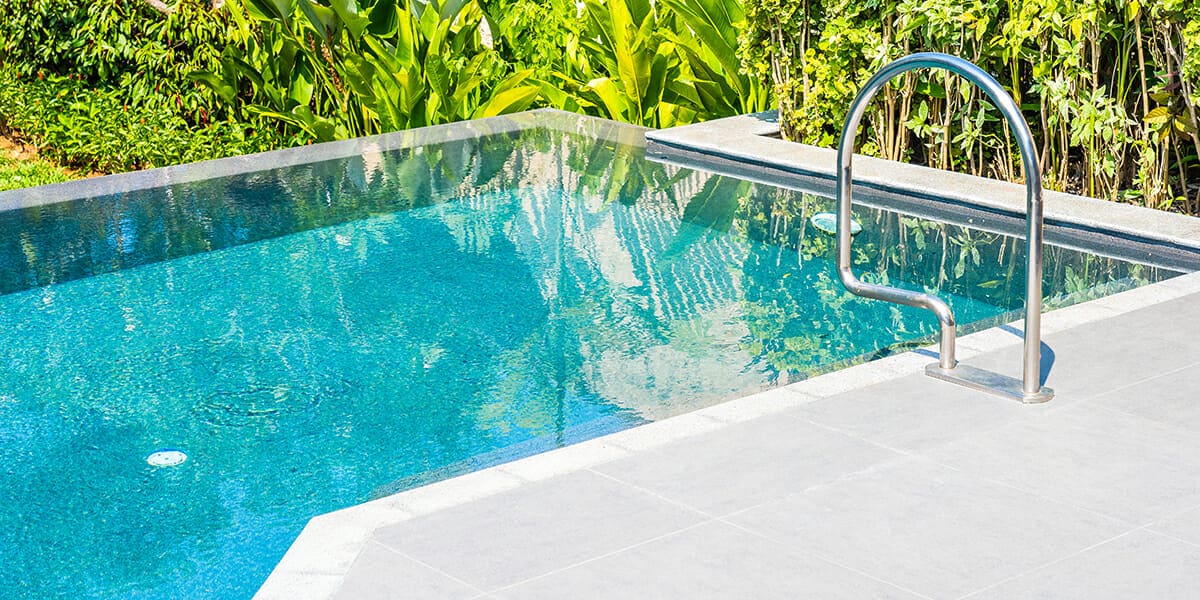When it comes to maintaining your pool, two popular methods often come into consideration: painting and resurfacing. Both approaches aim to enhance the pool’s appearance and longevity, but they serve different purposes and come with their own set of advantages and challenges. Understanding the key differences between painting vs. resurfacing can help you make an informed decision that best suits your pool’s needs.
What is Pool Painting?
Pool painting involves applying a layer of specialized paint to the interior surface of the pool. This process is typically quicker and less expensive than resurfacing, making it an attractive option for many pool owners.
Advantages of Pool Painting:
- Cost-Effective: Painting your pool is generally less expensive compared to resurfacing.
- Quick Application: The process is faster, allowing you to use your pool sooner.
- Variety of Colors: Paints come in various colors, giving you the flexibility to customize the look of your pool.
Disadvantages of Pool Painting:
- Shorter Lifespan: Paint tends to wear out faster, requiring more frequent reapplications.
- Maintenance: Painted surfaces can be prone to chipping and peeling, leading to additional maintenance.
- Surface Preparation: Proper surface preparation is crucial to ensure the paint adheres well, which can add to the time and cost.
What is Pool Resurfacing?
Pool resurfacing involves applying a new finish to the interior surface of the pool, which can include materials like quartz, pebble, or glass beads. This method is more comprehensive and provides a long-lasting solution.
Advantages of Pool Resurfacing:
- Durability: Resurfacing materials like quartz and pebble are more durable and can last for many years.
- Enhanced Aesthetics: Resurfacing offers a more polished and professional look.
- Improved Functionality: Modern resurfacing materials can improve the pool’s water quality and reduce maintenance needs.
Disadvantages of Pool Resurfacing:
- Higher Cost: Resurfacing is more expensive than painting.
- Longer Process: The resurfacing process takes longer, during which the pool cannot be used.
- Complex Installation: Resurfacing requires skilled professionals to ensure proper application.
Comparison of Pool Painting vs. Resurfacing
To help you better understand the key differences between painting vs. resurfacing, let’s compare them side by side.
Cost:
- Painting: Lower initial cost but may require more frequent applications.
- Resurfacing: Higher initial cost but offers long-term savings due to its durability.
Lifespan:
- Painting: Typically lasts 2-5 years.
- Resurfacing: Can last 10-20 years depending on the material used.
Aesthetics:
- Painting: Offers a fresh look with a variety of colors but can wear out quickly.
- Resurfacing: Provides a premium, long-lasting finish with options like quartz and pebble.
Maintenance:
- Painting: Requires regular touch-ups and maintenance.
- Resurfacing: Lower maintenance needs with durable materials.
Time to Complete:
- Painting: Usually completed in a few days.
- Resurfacing: Can take several weeks to complete.
Detailed Breakdown of Resurfacing Materials
Quartz Surface:
- Composition: A mix of quartz aggregate and polymer-modified cement.
- Advantages: Strong, water-resistant, and aesthetically pleasing.
- Best For: Those looking for a balance of durability and visual appeal.
Pebble Surface:
- Composition: Hand-selected durable pebbles and aggregates.
- Advantages: Provides a natural look with excellent traction.
- Best For: Active pool-goers who need a sturdy surface.
Glass Bead Surface:
- Composition: Standard pool finish materials combined with rounded glass beads.
- Advantages: Creates a striking mosaic look that enhances large pools.
- Best For: Pools where aesthetics are a high priority.
Steps in the Resurfacing Process
- Drain the Pool: Completely remove all water from the pool.
- Surface Preparation: Clean and prepare the surface by removing any old finishes.
- Repair: Fix any cracks or damage to ensure a smooth surface.
- Apply New Surface: Apply the chosen resurfacing material in layers.
- Curing: Allow the surface to cure properly before refilling the pool.
FAQs about Painting vs. Resurfacing
Q: How do I know if my pool needs resurfacing?
A: Signs include visible cracks, a rough texture, stains, and excessive water loss due to leaks.
Q: Can I paint my pool myself?
A: While it is possible, professional painting ensures proper surface preparation and application, leading to better results.
Q: How long does resurfacing take?
A: The process can take several weeks, depending on the size of the pool and the material used.
Q: What is the cost difference between painting and resurfacing?
A: Painting is less expensive initially but requires more frequent applications, while resurfacing has a higher upfront cost but lasts longer.
Q: Which method improves the pool’s value more?
A: Resurfacing typically adds more value due to its durability and enhanced aesthetics.
Q: Is pool painting or resurfacing better for a long-term investment?
A: Resurfacing is generally better for a long-term investment due to its durability and minimal maintenance requirements.
Q: How often should I paint my pool? A: Typically, you should repaint your pool every 2-5 years, depending on the quality of the paint and environmental factors.
Q: Can resurfacing fix structural issues in my pool?
A: Yes, resurfacing can address and repair structural issues, providing a new, stable surface.
Q: What materials are best for pool resurfacing?
A: Quartz, pebble, and glass beads are popular choices due to their durability and aesthetic appeal.
Q: Does resurfacing improve water quality?
A: Yes, resurfacing with modern materials can improve water quality by enhancing filtration and reducing maintenance needs.
Conclusion
Choosing between painting vs. resurfacing your pool depends on your budget, the current condition of your pool, and your long-term goals. While painting offers a quick and cost-effective solution, resurfacing provides a durable and aesthetically pleasing finish that can enhance the overall value and enjoyment of your pool. Evaluate your needs carefully and consult with pool professionals to make the best decision for your pool’s maintenance and longevity.
By understanding the key differences between painting vs. resurfacing, you can make an informed decision that best suits your pool’s needs, ensuring it remains a beautiful and functional centerpiece of your backyard for years to come.






